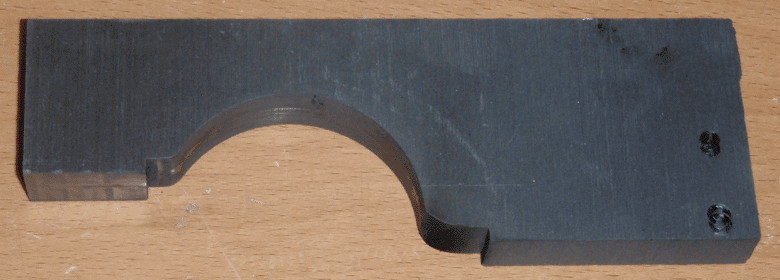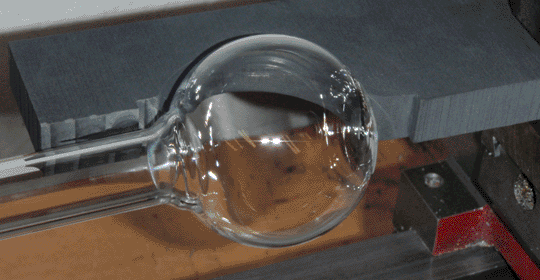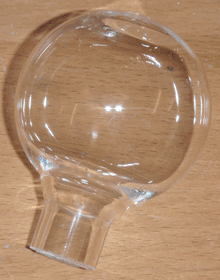
After making the previous two tubes, I experimented with various new base designs to attempt to overcome the melting issue during pin soldering. In doing so, the tubes became permanently attached to non-functional bases, so they are no longer suitable for use in the radio transmitter I had intended to build. Needing new tubes, I took this as an opportunity to make a larger envelope mold to further increase the power capacity of my components. The new mold produces a spherical envelope which is 2.125 inches in diameter, with a shoulder where it will be attached to its base. The results can be seen below.


Although the mold is used in much the same manner as the previous one, the large diameter makes doing so more difficult. First, thicker glass tubing (2.5mm wall thickness) had to be used, as the thinner (1.6mm wall thickness) tubing I had used for smaller envelopes produced a dangerously thin bulb. Second, the envelope cannot be blown from one end to the other as was previously done. A starting bulb must be blown in the center of the mold cavity, then finished to shape by passing the torch back and forth while blowing lightly. Other methods had a high failure rate, and produced bulbs with thin spots and wrinkles. The glass must also be spun at a lower speed than for the previous envelopes, as the greater diameter increases the tendency for it to fall off-center, and the large opening in the mold means this can rarely be corrected.
Despite these issues, the mold appears to be able to reliably form evenly-sized spherical envelopes with a large surface area for radiating heat. In the near future I will use one of these envelopes to make another power triode.